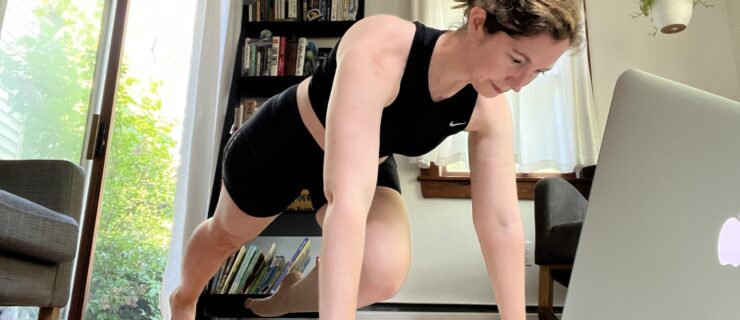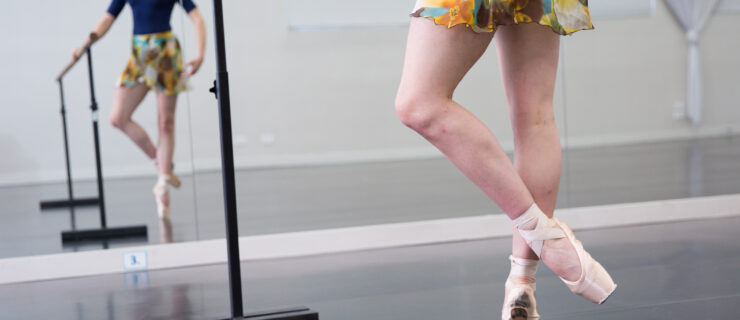The Dancer’s Guide to Finding a Mental Health Professional
I first sought out therapy in my sophomore year of college as a double major in dance and digital journalism. At the time, I was deep in disordered-eating thoughts, which added to my existing anxiety, and it was affecting my performance in dance classes. I knew I needed help, but the thought of going to therapy made me even more anxious.
Nevertheless, I made an appointment with my school’s counseling center. The therapist asked me about my life, I talked about my feelings, and I cried. My first session felt so jarring that I ended up canceling the next one.
A few months later, I wanted to try therapy again, but outside of school—I didn’t like the idea of walking the hallways past my classmates after crying in a session. I tried looking for a therapist that was covered by my insurance, but they were either far away or not accepting new clients. I ultimately got frustrated and stopped my search.
Years later, after a bad panic attack, I vowed to find a therapist. The pandemic worked in my favor, as more mental health professionals had begun offering virtual sessions that are easier to fit into my schedule. Now, I finally have someone I feel comfortable talking to each week.
Finding a therapist that matches your needs can be a struggle for anyone. Add in the unique demands of the ballet world, not to mention your stacked schedule, and it’s no wonder dancers seeking help can feel overwhelmed. To make the process less daunting, Pointe spoke with three mental health professionals for tips on how to start your search and find the right fit.

Step 1: Admitting You Need Help
Regardless of what you’re experiencing, know that anyone can benefit from therapy, and there is no prerequisite for speaking with someone. The first step to feeling better is realizing (and admitting) that you need professional help. Seeking support can be overwhelming, anxiety-provoking and humbling all at once.
Josh Spell, MSW, LICSW, consulting therapist to Pacific Northwest Ballet School and owner of Flexible Mind Counseling, says, “It’s really brave to ask for help because that’s not how we’ve been conditioned, especially as dancers.” But working through issues you’re experiencing in or outside of the studio can make you a stronger dancer, he says.
You might be skeptical yourself, thinking “I already have friends and family to talk to. Isn’t that enough?” As much as you may love them and no matter how hard they may try, friends and family have no way to be completely unbiased. New York City–based therapist Aliza Shapiro, LCSW, explains that friends are not always going to have insight into your psyche. “We’re just not trained like that as friends,” she says. “Friends can be supportive, but they can’t necessarily give somebody insight into why they’re behaving, feeling or thinking a certain way.”
For dancers specifically, having a space to talk freely and openly can be hugely beneficial. Dr. Miriam Rowan, a licensed clinical psychologist who is affiliated with the Boston Ballet School, says that a lot of time as a dancer is spent keeping quiet and following directions from teachers and choreographers. Moreover, in technique class, there’s usually a hierarchy between students and the teacher: “The typical power dynamic might make it hard for dancers to speak up. It’s important for them to realize that therapists are trained to be receptive in a way, unlike other coaches and directors who may not have been before.”

Step 2: The Search
Finding an affordable mental health professional that specializes in your needs requires patience. Coordinating insurance takes time, and, in some instances, the “ideal” therapist for you might not be accepting new clients. Moreover, finding someone you feel comfortable talking to may take some trial and error.
Before you start looking, Shapiro says, it’s best to get a grasp on what your primary concern is: Is it a recent injury? Have you been feeling down, stressed or anxious? Are you having disordered-eating thoughts? “If you’re not exactly sure what’s going on, that’s totally fine too, because any therapist will assess you and figure it out,” says Shapiro.
For the search itself, Shapiro, Spell and Rowan all suggest using Psychology Today’s website. You can narrow down your search by specialty, location, if they’re accepting new patients and if they take insurance. Most therapists have a picture and a bio on their profiles, so you can put a face with a name, and the website even lets you send a message to schedule a consultation. This is a great chance to see if you feel comfortable speaking with them and to double-check your insurance coverage.

Here are a few important questions to consider:
What kind of mental health professional is right for me? Once you start researching therapists, you’ll see a variety of titles, including licensed professional counselors (LPCs), licensed mental health counselors (LMHCs), licensed clinical social workers (LCSWs), psychologists (PhDs or PsyDs) and psychiatrists (MDs or DOs). While these credentials might feel overwhelming, Spell explains that they are all licensed professionals. “The difference is really in the schooling, and the path that the individual took,” he says.
You may also be interested in speaking with someone who’s familiar with dance and its challenges. Ballet companies or schools in your area may be able to recommend a psychologist who works with their dancers. Or, you may benefit from a performance or sports psychologist, who helps artists and athletes perform at their best and can address concerns surrounding auditions, competing and stage fright.
What kind of treatment do I need? During your search, you’ll encounter different therapy modalities, including cognitive-behavioral therapy (CBT), psychodynamic therapy, dialectical behavior therapy (DBT), and acceptance and commitment therapy (ACT). You may start to wonder, “What do all the terms mean, and should I seek out a specific treatment?” Spell explains that these are evidence-based practices. “That means there was research or a clinical trial done to see if the type of therapy had some sort of direct effect on the outcome of treatment,” he says.
Rowan shares that each therapeutic approach focuses on different goals and tasks, such as learning how to cope with high levels of distress through applying specific coping skills, improving relationships through feedback and problem solving, or grieving a loss through identifying and expressing emotions. After speaking with your therapist for a few sessions, they’ll likely be able to help you determine the best therapeutic approach for your needs.
How can I afford therapy? One hurdle that stops a lot of dancers from seeking help is the cost. Shapiro says, “I tell everybody that if finances are a concern and if they have insurance, the first thing they should do is call their insurance. There are a lot of therapists that are in-network.”
In my case, I was able to log in to my insurance’s online portal and search its database for a participating professional near me. Sites like ZocDoc and Psychology Today also allow you to filter by your particular insurance. To avoid any billing surprises, you should speak with your insurance provider and your therapist’s office before you start treatment. They can help you understand any co-pays associated with mental health visits, as well as your in-network and out-of-network deductibles.
For dancers without insurance—or if your plan doesn’t include substantial mental health coverage—Open Path Collective offers affordable therapy options. Sessions are offered on a sliding scale of $30 to $60 per visit for those who have a financial need.
Alternative options to traditional therapy. If traditional, one-on-one counseling isn’t possible for you for whatever reason, there are alternatives, such as seeking out group therapy or local support groups, which can provide a supportive space to heal and help you realize that you are not alone in your struggles. And while it’s not a replacement for a session with a professional, Rowan notes that some dancers may benefit from practicing mindfulness—being present in the moment, noticing what arises and not judging those thoughts and emotions—by taking a class or reading a book on the topic. As an introduction to the practice, she recommends the writing of Jon Kabat-Zinn, PhD, the founder of Mindfulness-Based Stress Reduction, a secular mindfulness program that draws from Buddhist roots.

Step 3: Seeing Your Therapist
You’ve found a therapist and you’ve made your first appointment—congrats! Now it’s time to carve out regular time for sessions and show up, even when it might feel uncomfortable to talk about how you feel.
If you start with a therapist and don’t seem to click, know that it’s okay to “shop” around. Both Rowan and Spell explain that it typically takes up to three sessions to know whether or not they’re right for you. Finding someone you trust is important, says Spell: “The number one predictor of the best possible outcomes from therapy is the rapport and the relationship that you establish with a therapist.”
As dancers, Spell suggests that we shift our mindset about therapy, and think of it as another thing we can do to strengthen ourselves as artists and as people. “A therapist helps you untangle the mess that we create in our minds and then offers different perspectives” he says. “It’s really like going to the gym. It’s like doing your exercises—that’s meditation or mindfulness or journaling or talking. All of those things can contribute to being a more psychologically healthy, holistic dancer.”
If you’re in a crisis situation and need immediate help, reach out to the nationwide 988 Suicide & Crisis Lifeline, available 24/7 via call or text. College and conservatory students may also have on-call mental health services available through their schools.





